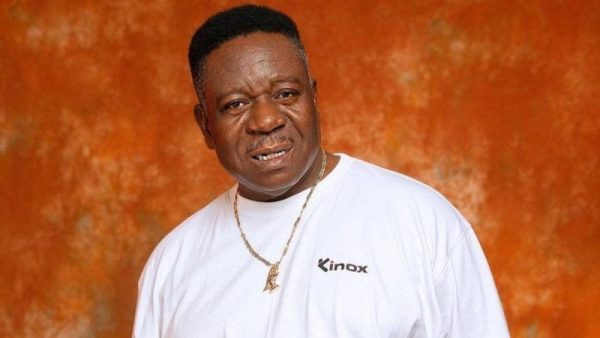Mr Ibu’s leg amputated…what to know about leg amputation

Veteran Actor, John Okafor, popularly called Mr Ibu has undergone surgery to amputate one of his legs. This was announced by his family via his Instagram page on Monday, November 6th.
Reports about the ailment of Mr Ibu surfaced in October, and financial support was sought to assist in his medical treatment.
Mr Ibu has now successfully undergone seven surgeries, including the amputation of one of his legs in an effort to save his life.
The statement read
“We want to appreciate everyone that has come through for our dad, saying we are grateful is an understatement and only the good Lord can thank you all enough for every help you’ve rendered.
As of 1 pm, noon today, Daddy has gone through 7 successful surgeries but to keep him alive and increase his chances of recovery one of his legs had to be amputated.. This development has been hard on us all but we’ve had to accept it as Daddy’s new reality to keep him alive.”
Further financial help was also solicited to aid Mr Ibu’s recovery.
ALSO READ: Reno, VeryDarkMan appeal for support as Mr Ibu cries from hospital bed
Here are things to know about amputation:
Amputation is a significant and life-altering medical procedure that involves the removal of a body part, typically a limb, due to various reasons such as injury, disease, or congenital conditions.
Reasons for Amputation
Amputations are performed for various reasons, including:
- Traumatic injuries: Severe accidents or injuries may cause irreparable damage to limbs, necessitating amputation to prevent infection and further complications.
- Vascular conditions: Poor blood circulation, often associated with conditions like diabetes or peripheral artery disease, can lead to tissue damage, making amputation necessary.
- Cancer: In cases where cancerous tumors threaten the patient’s health, surgical removal, including amputation, might be required.
- Congenital defects: Some individuals are born with limb abnormalities, which might require surgical intervention to improve mobility and quality of life.
ALSO READ: Mr Ibu’s health, Killaboi’s arrest, Otukpo robbery…top stories for the week
The Amputation Procedure
The amputation process involves several key steps:
- Evaluation: The surgeon assesses the limb’s condition and the reasons for amputation. This evaluation helps determine the level of amputation and the best approach.
- Anesthesia: The patient is given anesthesia to ensure they are comfortable and pain-free during the procedure
- Removal: The surgeon carefully removes the affected limb, making sure to leave enough healthy tissue for proper wound healing
- Wound closure: The wound is then closed, either with sutures or by leaving it open, depending on the individual case.
Recovery and Rehabilitation
Recovery after amputation is a gradual process that includes:
- Wound care: Proper wound care is essential to prevent infection and promote healing. This may involve dressing changes and antibiotics.
- Physical therapy: Rehabilitation and physical therapy are crucial to help patients regain strength, mobility, and independence.
- Prosthetics: In many cases, patients will be fitted with prosthetic limbs to aid in mobility and daily activities.
- Emotional support: Coping with the physical and emotional changes following amputation can be challenging. Emotional support from friends, family, and mental health professionals is vital.
Lifestyle Changes
Amputation can significantly impact one’s daily life. Individuals may need to make adjustments in various aspects, such as:
- Mobility: Learning to use a prosthetic limb or wheelchair if necessary.
- Home modifications: Adapting one’s living space to accommodate mobility aids and ensure safety.
- Psychological adjustment: Coming to terms with the loss of a limb and seeking emotional support.
- Independence: Relearning daily tasks and regaining independence through rehabilitation.
Prosthetic Options
Prosthetic technology has advanced significantly, offering various options to suit different needs and lifestyles. These options include:
- Below-knee prosthetics: Designed for individuals with partial leg amputations, offering improved mobility.
- Above-knee prosthetics: For those with amputations higher on the leg, with more advanced components for stability.
- Upper-limb prosthetics: These can range from simple cosmetic prostheses to highly functional myoelectric devices controlled by muscle signals.
Support and Resources
Amputees can benefit from joining support groups, where they can share their experiences, receive advice, and find emotional support. Many organizations and charities also provide resources and assistance to amputees and their families.




